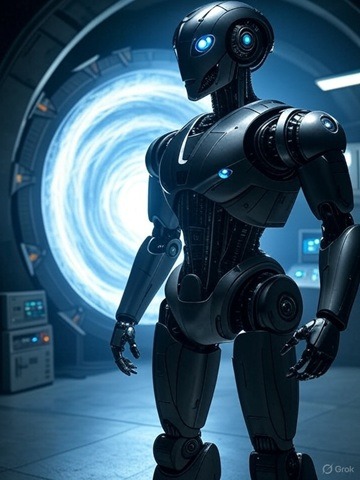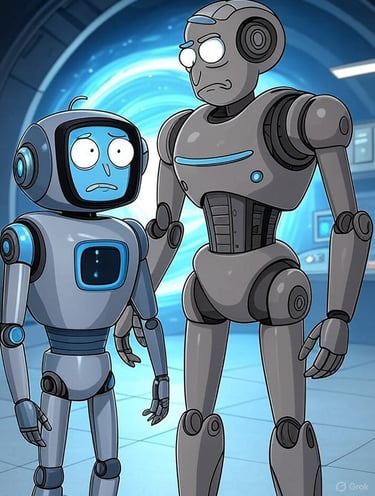Theories of Multiple Dimensions: Separating Scientific Theories from Hollywood Hype
Exploring the science of extra dimensions versus cinematic exaggerations
AI
7/30/20255 min read
Published July 29, 2025
The concept of multiple dimensions has long captured the human imagination, fueling both rigorous scientific inquiry and fantastical storytelling in Hollywood blockbusters. From string theory’s predictions of hidden spatial dimensions to cinematic portrayals of parallel universes and interdimensional travel, the idea of realities beyond our familiar three-dimensional world intrigues scientists and audiences alike. However, the gap between scientific theories of multiple dimensions and their depiction in popular media is vast. This article delves into the scientific foundations of multidimensional theories, contrasts them with Hollywood’s dramatized interpretations, and explores why the distinction matters.
The Scientific Foundations of Multiple Dimensions
To understand multiple dimensions from a scientific perspective, we must start with the basics of our observable universe. In everyday life, we perceive three spatial dimensions—length, width, and height—plus time as a fourth dimension, often referred to as spacetime in the context of Einstein’s theory of relativity. However, theoretical physics suggests that additional spatial dimensions may exist, imperceptible to us due to their scale or structure.
Early Concepts: From Flatland to Kaluza-Klein
The idea of extra dimensions isn’t new. In 1884, Edwin A. Abbott’s novella Flatland introduced the concept of dimensions beyond human perception through a satirical tale of two-dimensional beings encountering a three-dimensional world. While fictional, Flatland inspired early scientific thought about higher dimensions.
In the 1920s, physicists Theodor Kaluza and Oskar Klein proposed a groundbreaking theory to unify gravity and electromagnetism. They suggested that a fifth dimension, curled up at an unimaginably small scale (on the order of the Planck length, ~10⁻³⁵ meters), could account for electromagnetic forces. This Kaluza-Klein theory laid the groundwork for modern multidimensional models by suggesting that extra dimensions could exist but remain hidden due to their compact size.
String Theory and Extra Dimensions
The most prominent modern framework for multiple dimensions comes from string theory, a leading candidate for a “theory of everything” that unifies quantum mechanics and general relativity. String theory posits that the fundamental building blocks of the universe are not point-like particles but tiny, vibrating strings. For the mathematics of string theory to work consistently, the universe must have more than three spatial dimensions.
Depending on the variant, string theory requires 10 or 11 dimensions—nine or ten spatial dimensions plus time. These extra dimensions are theorized to be “compactified” into incredibly small, complex geometric structures, such as Calabi-Yau manifolds, which are too tiny for current experiments to detect. For example, if you imagine our three-dimensional space as a sheet, these extra dimensions might be curled up into microscopic loops within that sheet, invisible to our senses and instruments.
Braneworld Scenarios
Another multidimensional theory is the braneworld scenario, which suggests that our universe is a three-dimensional “brane” (short for membrane) embedded in a higher-dimensional space called the “bulk.” In this model, particles and forces (except gravity) are confined to the brane, while gravity can leak into the bulk, potentially explaining why gravity is weaker than other fundamental forces. The Randall-Sundrum model, proposed in 1999, is a well-known example, suggesting extra dimensions could be larger than previously thought, though still beyond direct detection.
Experimental Searches for Extra Dimensions
Scientists are actively searching for evidence of extra dimensions using particle accelerators like the Large Hadron Collider (LHC). If extra dimensions exist, they might manifest as missing energy in particle collisions (due to particles escaping into the bulk) or as new particles predicted by string theory. So far, experiments have set constraints on the size of extra dimensions but have found no direct evidence. For instance, the LHC has ruled out extra dimensions larger than about 10⁻¹⁹ meters in some models.
Cosmological observations also play a role. The cosmic microwave background, a snapshot of the early universe, shows no clear signatures of extra dimensions affecting gravity on large scales. However, these null results don’t disprove extra dimensions; they simply refine the parameters under which they might exist.
Hollywood’s Take: Multidimensions as Plot Devices
While science cautiously explores extra dimensions through mathematics and experiments, Hollywood embraces them with creative liberty, often prioritizing drama over accuracy. Films and TV shows like Interstellar, Doctor Strange, Stranger Things, and Everything Everywhere All at Once have popularized the concept of multiple dimensions, but their portrayals often diverge significantly from scientific theories.
Parallel Universes vs. Extra Dimensions
A common Hollywood trope is the parallel universe, often conflated with extra dimensions. In films like Spider-Man: Into the Spider-Verse, characters jump between alternate realities with different versions of themselves. Scientifically, parallel universes arise in the context of the multiverse, a hypothesis distinct from extra dimensions. The multiverse, supported by some interpretations of quantum mechanics or inflationary cosmology, suggests multiple three-dimensional universes with different physical laws or histories. Extra dimensions, by contrast, are additional spatial directions within a single universe, as in string theory or braneworld models.
Hollywood rarely distinguishes between these concepts, using “dimensions” as a catch-all term for alternate realities, time loops, or mystical realms. For example, in Doctor Strange, the “multiverse” includes visually spectacular realms like the Mirror Dimension, which are more akin to magical or metaphysical spaces than the compactified dimensions of string theory.
Interdimensional Travel and Portals
Another staple of Hollywood is interdimensional travel, often depicted through glowing portals or wormholes. In Interstellar, characters traverse a wormhole to access distant parts of the universe, guided by a “tesseract” that visualizes higher-dimensional space as a manipulable 3D construct. While wormholes are theoretically plausible under general relativity, they require exotic matter to remain stable, and the tesseract’s depiction oversimplifies the complexity of higher-dimensional geometry. Similarly, Stranger Things’ Upside Down is presented as a parallel dimension accessible through portals, but it bears little resemblance to the compactified dimensions of Kaluza-Klein or string theory.
The Appeal of Hollywood’s Hype
Hollywood’s exaggerations serve a purpose: they make abstract concepts accessible and exciting. The idea of stepping into another dimension or meeting alternate versions of oneself is inherently dramatic and relatable, unlike the esoteric mathematics of Calabi-Yau manifolds. Visual effects, like the kaleidoscopic realms in Doctor Strange or the chaotic multiverse of Everything Everywhere All at Once, prioritize spectacle over scientific rigor, creating memorable narratives that resonate with audiences.
Bridging the Gap: Why the Distinction Matters
The divergence between science and Hollywood isn’t inherently problematic—entertainment doesn’t need to be a physics textbook. However, the conflation of extra dimensions with parallel universes or mystical realms can create misconceptions about what science is actually exploring. Here’s why distinguishing between the two is important:
Scientific Literacy: Misrepresentations can lead audiences to believe that extra dimensions are more tangible or accessible than current science suggests. For example, the idea of “traveling” to a higher dimension ignores the fact that compactified dimensions are microscopic and not navigable spaces.
Inspiration vs. Misinformation: Hollywood can inspire interest in physics, as seen in the surge of curiosity about black holes after Interstellar. However, without clear distinctions, audiences may conflate fictional mechanisms (like portals) with real scientific challenges, underestimating the complexity of detecting extra dimensions.
Funding and Support for Science: Public fascination with multidimensional theories can drive support for experiments like the LHC. However, overhyped expectations (e.g., expecting interdimensional travel soon) can lead to disappointment when science progresses incrementally.
Reconciling Science and Storytelling
To bridge the gap, scientists and communicators can leverage Hollywood’s popularity to explain multidimensional theories accurately. For instance, Interstellar collaborated with physicist Kip Thorne to ensure some scientific grounding, even if the film took liberties. Science communicators can use popular media as a springboard to discuss real concepts, like compactification or braneworlds, in accessible terms.Meanwhile, audiences can enjoy multidimensional stories while recognizing their fictional nature. Asking questions like “What does science say about this?” can deepen appreciation for both the creativity of Hollywood and the rigor of theoretical physics.
Conclusion
Theories of multiple dimensions, from Kaluza-Klein to string theory, offer a glimpse into the profound mysteries of our universe, suggesting realities beyond our perception. Hollywood, in contrast, transforms these ideas into dazzling narratives that prioritize emotion and spectacle. While the scientific pursuit of extra dimensions involves complex mathematics and painstaking experiments, cinematic portrayals thrive on portals, parallel worlds, and interdimensional adventures. By understanding the distinction, we can appreciate both the awe-inspiring possibilities of physics and the creative storytelling that brings these ideas to life. Whether you’re marveling at a Calabi-Yau manifold or cheering for a hero leaping through a portal, the concept of multiple dimensions reminds us that our universe is far stranger—and more wondrous—than we can imagine.





Your Opinion? Let us know!
We’re here to help you enhance your life with AI.